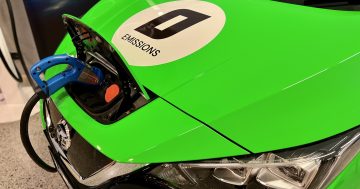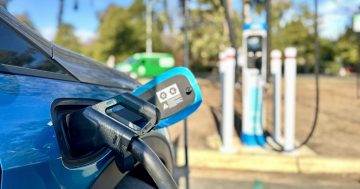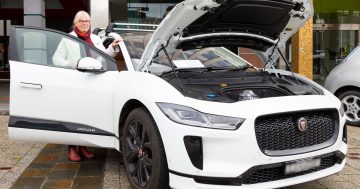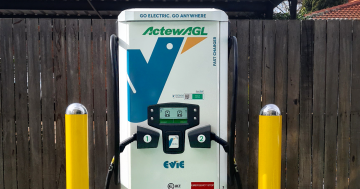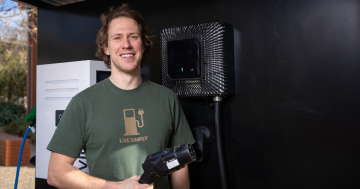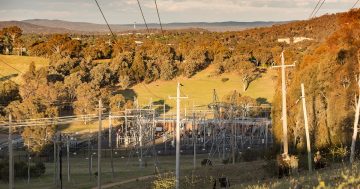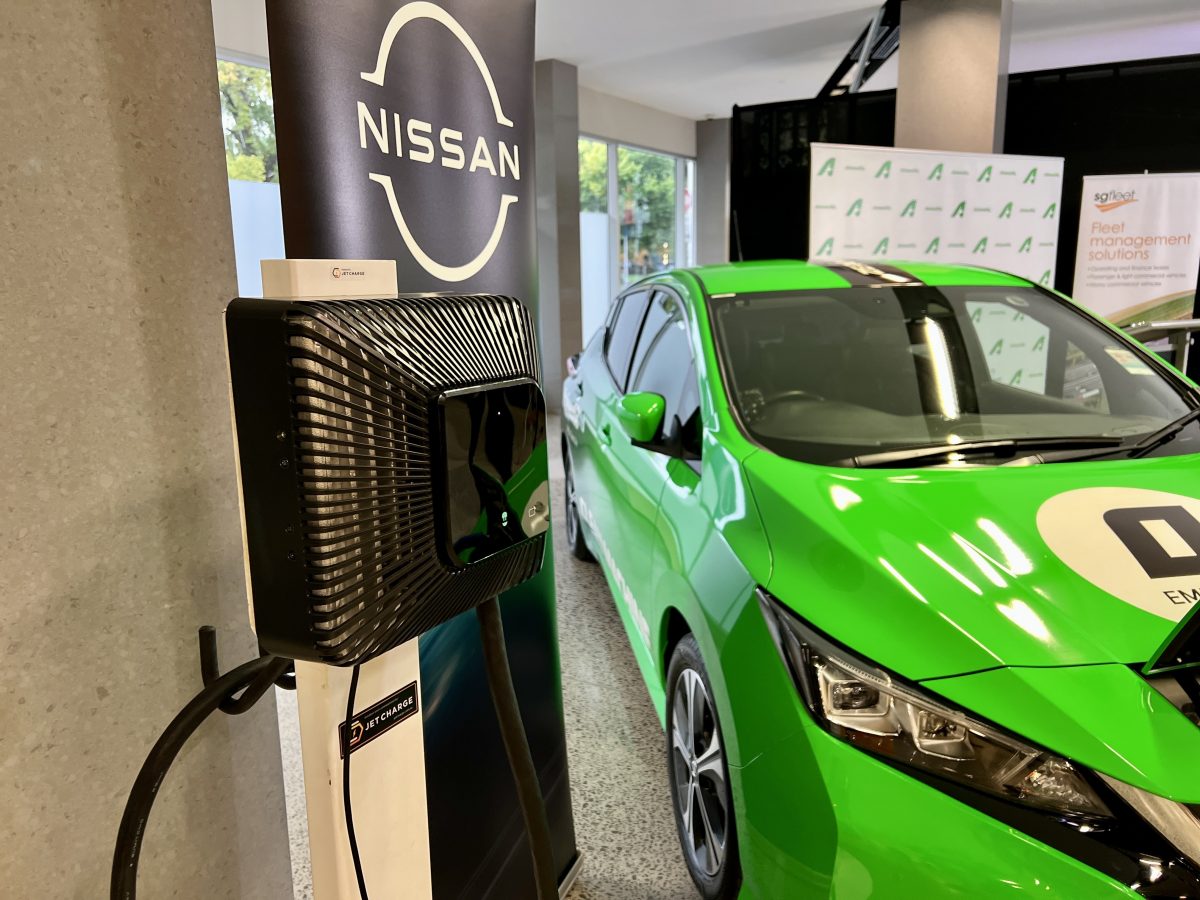
The Vehicle-to-Grid (V2G) trial was run with help from ActewAGL, Nissan and JET Charge. Photo: James Coleman.
We all know you can charge up an electric vehicle (EV) by plugging it into the grid, but what about the other way around?
Canberra energy provider ActewAGL and a range of other industry partners have wrapped up a world-first project to find out how EV owners can use their car as a sort of home battery.
The Realising Electric Vehicle-to-Grid Services (REVS) study started in 2020, designed as a small-scale test of vehicle-to-grid (V2G) systems. In other words, how EV owners can inject electricity back into the grid during blackouts and other disruptions, and get paid for it.
The ACT Government, Evoenergy, the Australian National University (ANU), SG Fleet, JET Charge and Nissan were involved in the $6.26 million project, with a $2.73 million grant awarded by the Federal Government’s Australian Renewable Energy Agency (ARENA).
The ACT Government provided 50 second-generation Nissan Leaf EVs from its fleet and ActewAGL, one. Launched locally in 2019, this was the only EV available in Australia with bi-directional charging capability, which means its 40 kWh battery pack can not only be charged from mains power or rooftop solar, but can also send electricity back the other way into the grid.
Charging services company JET Charge provided 51 special bi-directional chargers – valued at about $10,000 each – across 11 sites in the ACT.
Separate systems monitored charger and vehicle availability, as well as a range of electrical parameters, to manage how much power is being drawn into the grid.
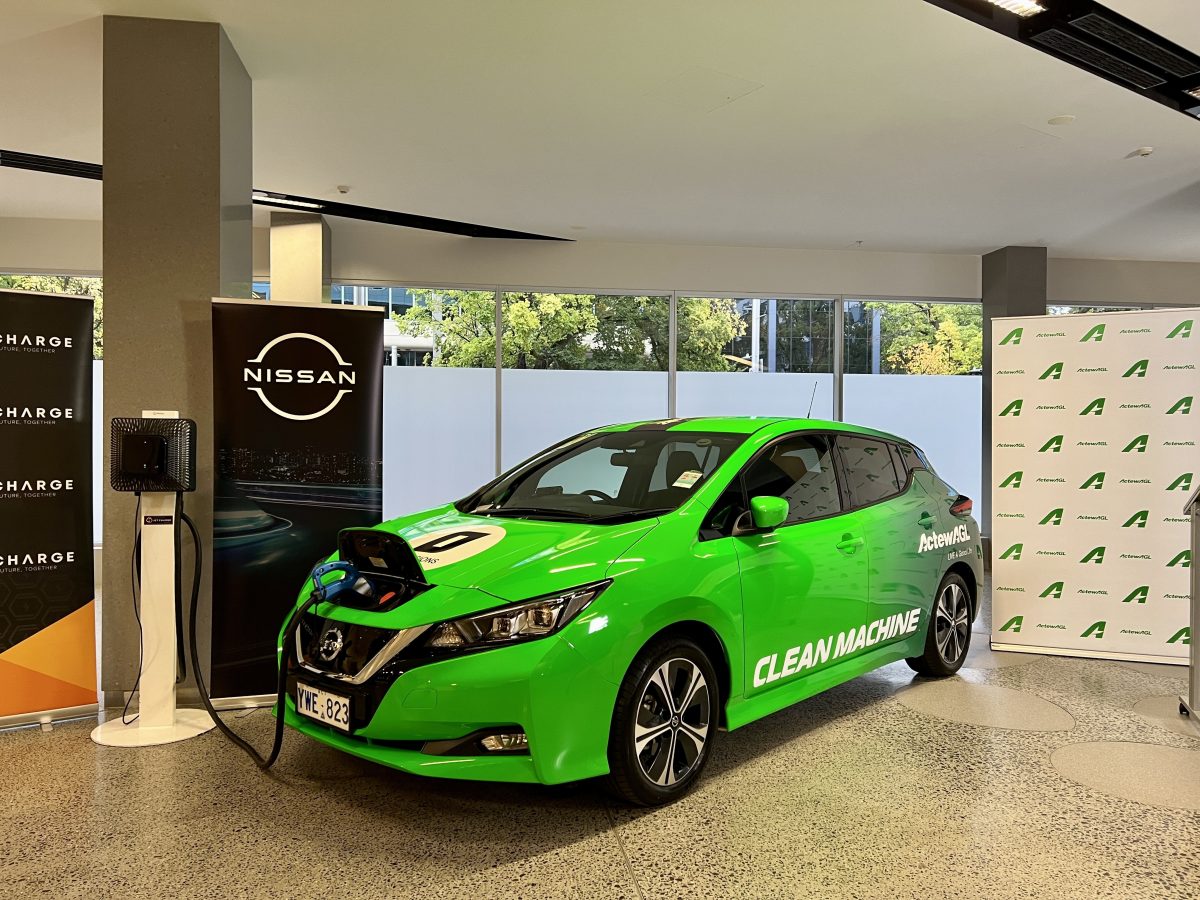
The ACT Government provided 50 Nissan Leaf EVs for the project. ActewAGL also provided one. Photo: James Coleman.
“This trial has demonstrated that fleet EVs could play a vital role in supporting our energy grid and in boosting energy security,” ACT Energy Minister Shane Rattenbury said.
“The insights gained from the past two years will be particularly beneficial during times of peak power usage as a way of balancing renewable energy delivered to the grid.”
ActewAGL CEO John Knox described the project as “ground-breaking”.
“The dispatch nature of the electric vehicles will be absolutely essential in addressing the variability of renewable generation, making it a critical part of the future renewable energy sector,” he said.
The idea is that when the wind doesn’t blow and the sun doesn’t shine, ActewAGL will be able to draw power from thousands of Canberra’s EV batteries through V2G systems to prevent widespread blackouts.
But does this mean you’ll be left with a dead car in the morning?
“Absolutely not,” ActewAGL group manager of Energy Transition Products Todd Eagles said.
“An EV’s primary use is transport and it has to remain as transport. The technical solution for this is setting hard limits in terms of how much charge owners want left in their batteries to go about their lives.”
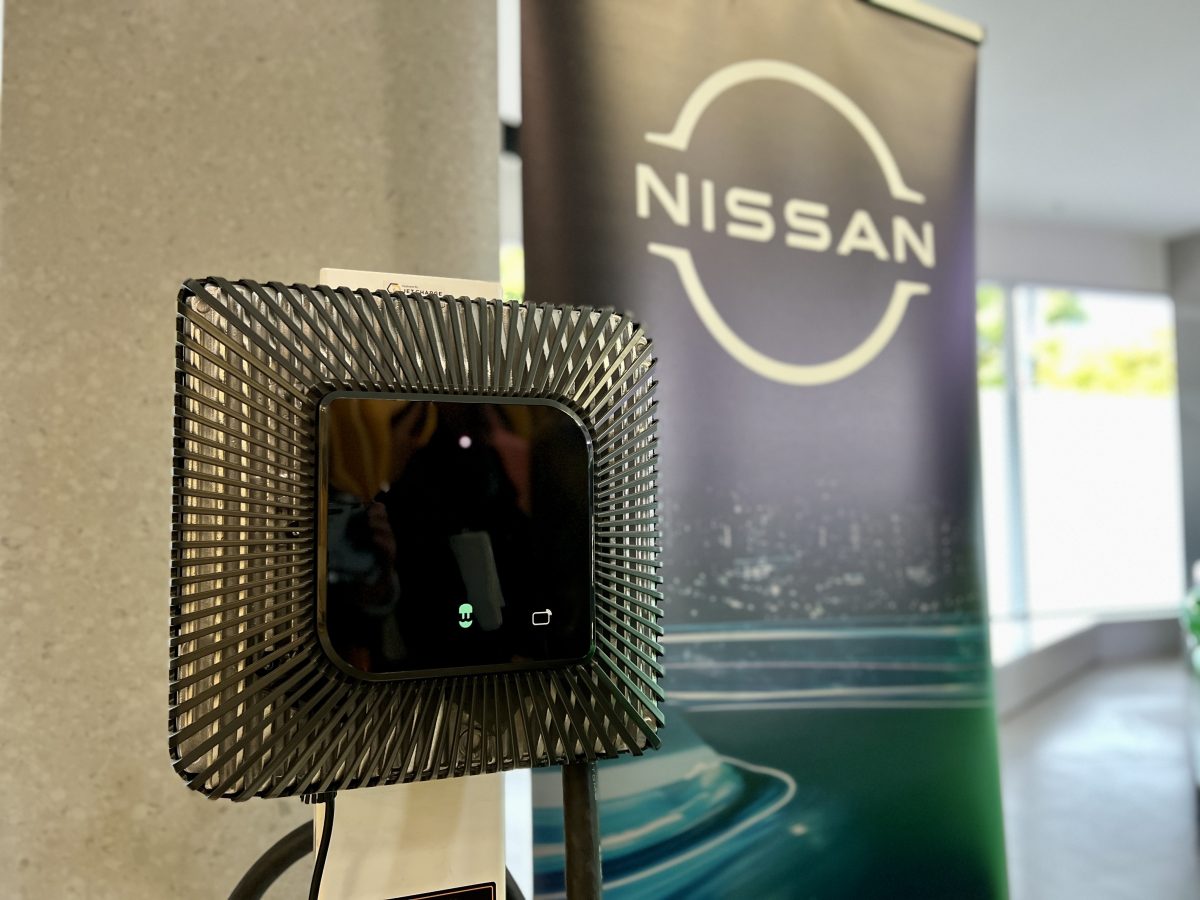
The JET Charge bi-directional chargers cost about $10,000, plus installation costs. Photo: James Coleman.
Not only is it about the “reliability and resilience of the electricity grid”, there are said to be economic benefits for fleet owners and private buyers.
When an EV is plugged in, the battery can be used to power the home or business during peak hours. Owners can then charge the car again off-peak to save on power bills. Or, the EV owner can make money by selling excess energy back to the grid, at least $400 per annum based on FCAS (Frequency Control Ancillary Services) figures alone.
“From a consumer perspective, it’s the equivalent of having six home-scale batteries,” Mr Eagles said.
“There’s the potential for your EV to become a revenue stream rather than a cost in the household budget.”
The V2G bi-directional charging systems might be expensive for now, but JET Charge founder Tim Washington expects this to change as more come to market.
“Many people will understand if you charge half from solar and half from off-peak, that’s probably less than how much you’d spend on electricity just driving electric,” he said.
“So imagine a world where a bi-directional charging station costs just a bit more than a standard solar inverter – because you have to account for the plug and cable. In that world, the electricity savings are there. We’re just waiting for equipment costs to come down as we hit mass scale.”
For more information on the REVS project, visit the ANU’s Battery Storage and Grid Integration Program website.












